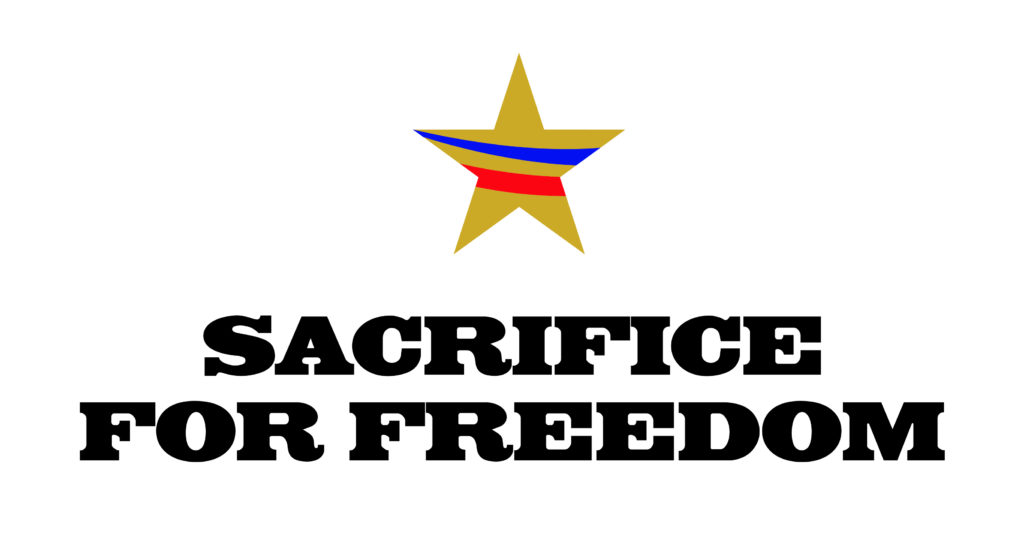Lieutenant Junior Grade Richard J. Walsh, Jr.
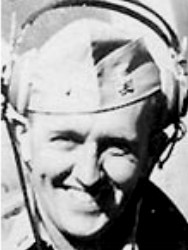
- Unit: VT-84, USS Bunker Hill
- Service Number: 158058
- Date of Birth: June 26, 1920
- Entered the Military: July 1, 1941
- Date of Death: April 7, 1945
- Hometown: Philadelphia, Pennsylvania and Phoenix, Arizona
- Place of Death: South China Sea, near Okinawa
- Award(s): Navy Cross, Distinguished Flying Cross with Gold Star, Air Medal with Gold Star, Purple Heart
- Cemetery: Courts of the Missing, Court Two. National Memorial Cemetery of the Pacific, Honolulu, Hawaiʻi
Mentored by Ms. Samantha Ness
Copper Canyon High School
2022/2023
Early Life
Richard Walsh, Jr. was born in Philadelphia, Pennsylvania, on June 26, 1920, but moved to Phoenix, Arizona, where he was raised. Richard’s parents were Richard John Walsh and Nellie Bradley. Richard had three brothers, Peter and Timothy, an unnamed infant who died young, and one sister, Jane.
Richard’s family owned a company named “Walsh Bro’s.” Richard attended Phoenix Union High School, graduating in 1937. After high school, he attended Phoenix Junior College from 1938 to 1939. Richard returned to his home state to attend the Wharton School of Finance at the University of Pennsylvania from 1940 to 1942. At the University of Pennsylvania, he was also a Alpha Tau Omega fraternity member.
Richard enlisted into the military from Arizona in July 1941. While training in Florida, Richard, nicknamed Dick, met Grace Elizabeth Beardsley and in 1943, they married in Fort Lauderdale, Florida. They did not have any children.
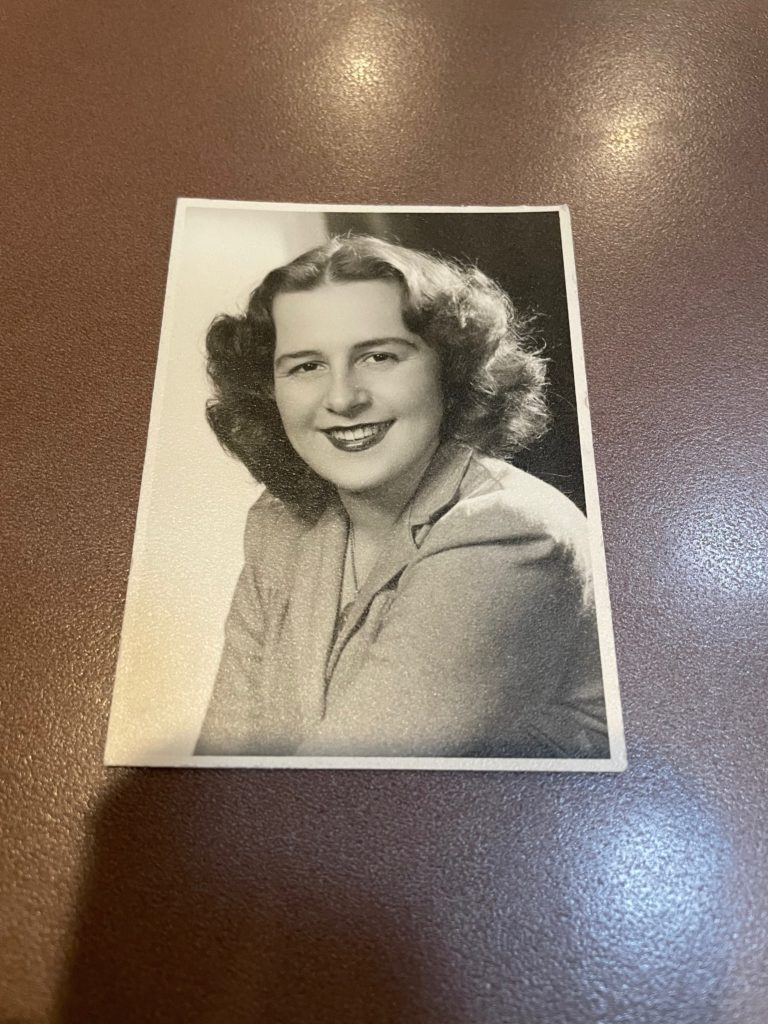
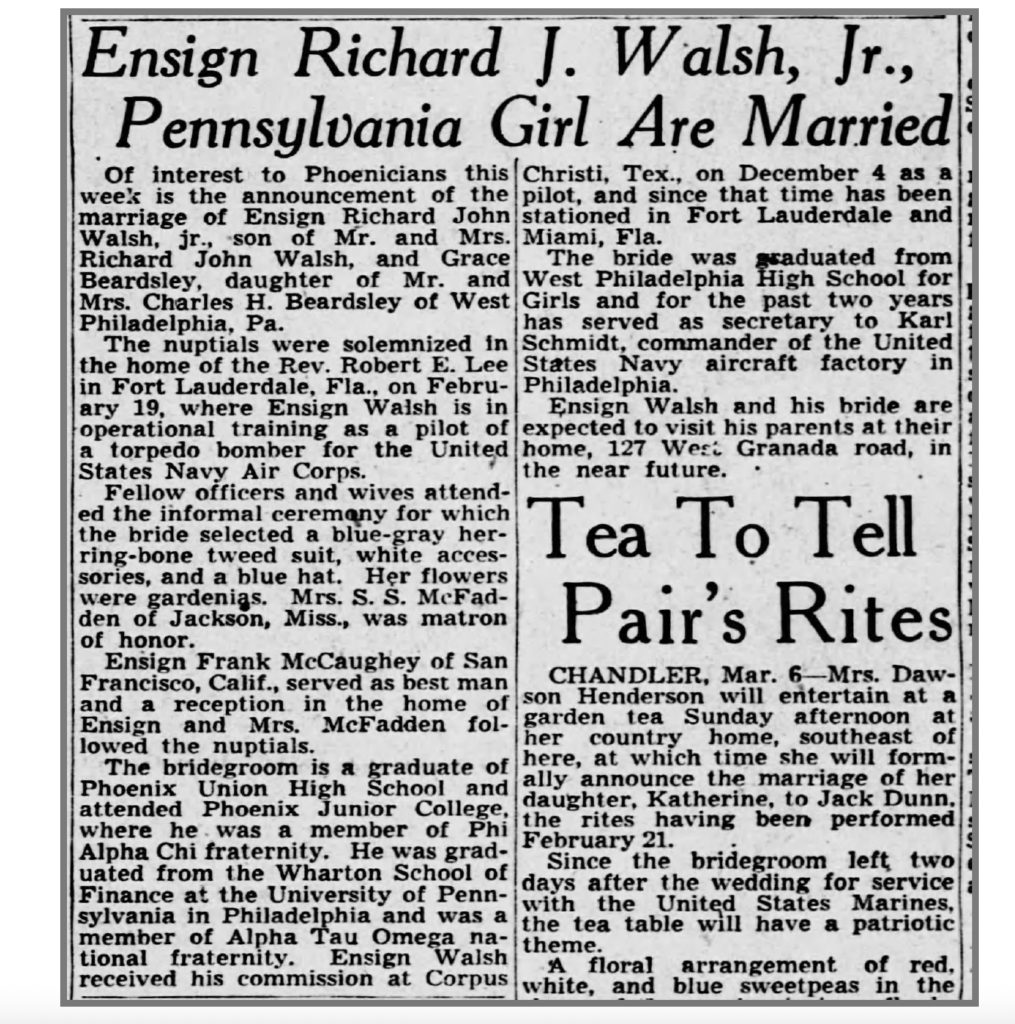
Homefront
During World War II, the city of Phoenix grew and became more populous. The city built air fields to keep up with the need of the war, and eventually got more involved with the production of wartime supplies. Copper and other minerals were being mined.
Women, Native Americas, and Mexicans also known as “Braceros” worked to help provide labor for the war.
The 4-H community recruited students to raise animals and create civic engagement, victory gardens, and learn about the war. The club’s slogan became “Food for Freedom.” Coconino County focused its 4-H programs on increasing potato acreage to 800, later reducing to 210 in the post-war era. Under an extension program, women under an extension taught housewives how to conserve in the home for the sake of war effort resources.
During the war, racial tensions began to rise as more people, especially minorities were relocating to the area such as Mexican Americans, African Americans, and Native Americans. Nearby Prison of War camps that held German and Italian POWs, mostly generals, were the source of additional anxiety and stress for the citizens of Arizona.
Japanese Americans faced great challenges and tensions. A line divided Arizona. Japanese American citizens north of the line were free and those south were not. Two main internment camps for citizens of Japanese ancestry in Arizona were Gila River and Postdon. Over 17,000 people were interned in Postdon, over 13,000 were imprisoned at Gila River. More than two-thirds of the total number of internees were sent to Arizona. Both camps were on Native American reservations; neither Indigenous tribe agreed with the arrangement.
Phoenix experienced an expansion of airfields. To give pilots from around the world a home, the local luxury resort, “The Wigwam,” became a housing hotel. The 158th Infantry Regiment, called the “bush masters,” was created with members of the Arizona National Guard.
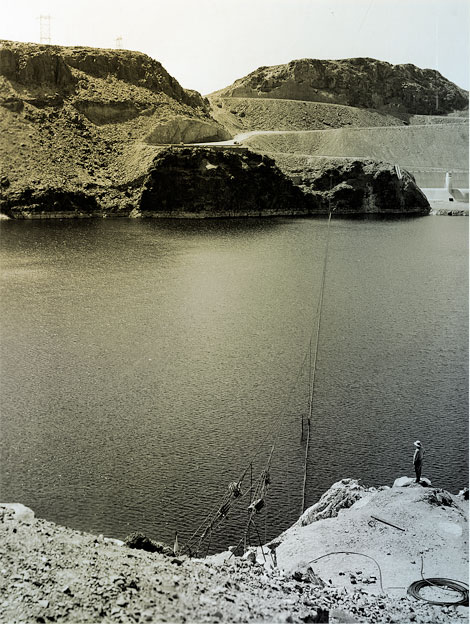
Military Experience
Richard Walsh enlisted in the United States Naval Reserve in July 1941. He was first sent to Corpus Christi, Texas for his basic naval training, graduating on December 2, 1942. Cadet Walsh also received training in Fort Lauderdale, Florida; Long Beach, California; and the Naval Training Center in San Diego, California. Walsh departed San Diego on January 18, 1945.
After his training, Richard Walsh was assigned to the USS Bunker Hill (CV-17) as part of the VT-84 torpedo Squadron, Task Force 58. He earned the rank of lieutenant junior grade on March 1, 1945. Walsh was a pilot of a TBM-3 Avenger Plane, a torpedo bomber. He and his crew dropped torpedoes on targets and provided air support to the servicemembers on the ground.
Stationed in the Ulithi Islands, Lientenant Walsh and his crew undertook many vital missions providing much-needed support over Okinawa (March 30-April 6, April 8, April 11-13), striking the Japanese fleet hear Kyushu (April 7), strikes on Minami Daito, Jima (April 10), and air strikes on Kyushu, Japan (April 15-16).
On April 7, while providing support over Okinawa, his crew was ordered to fire on the Japanese battleship Yamato. While firing on the Yamato, Walsh’s aircraft was hit by anti-aircraft fire, killing Lieutenant Wash and his crew upon impact when they hit the water.
Eventually, VT- 84 squadron sunk the Yamato. At first, Lieutenant Walsh was labeled as missing in action before being formally declared killed in action.
Today Lieutenant Walsh is honored on the Courts of the Missing at the National Memorial Cemetery of the Pacific in Honolulu, Hawaiʻi. For his meritorious service, Lieutenant Wash was awarded he was awarded the Navy Cross, Distinguished Flying Cross with Gold Star, Air Medal with Gold Star, Purple Heart, American Campaign Medal, American Defense Service Medal, World War II Victory Medal, Asiatic/Pacific Campaign Medal, and Philippine Liberation Medal.
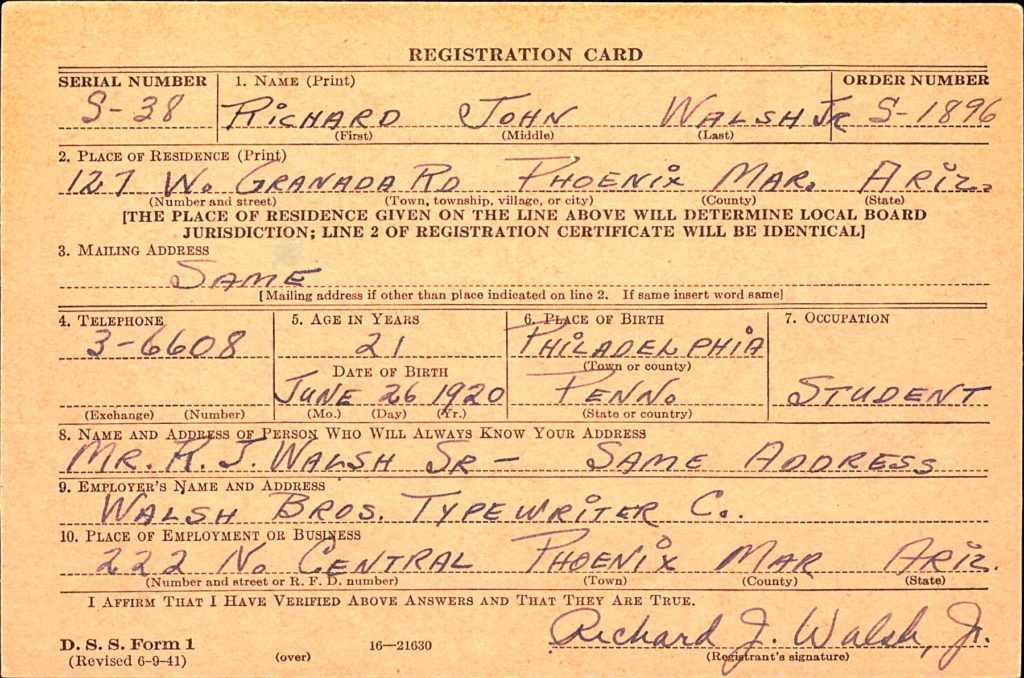

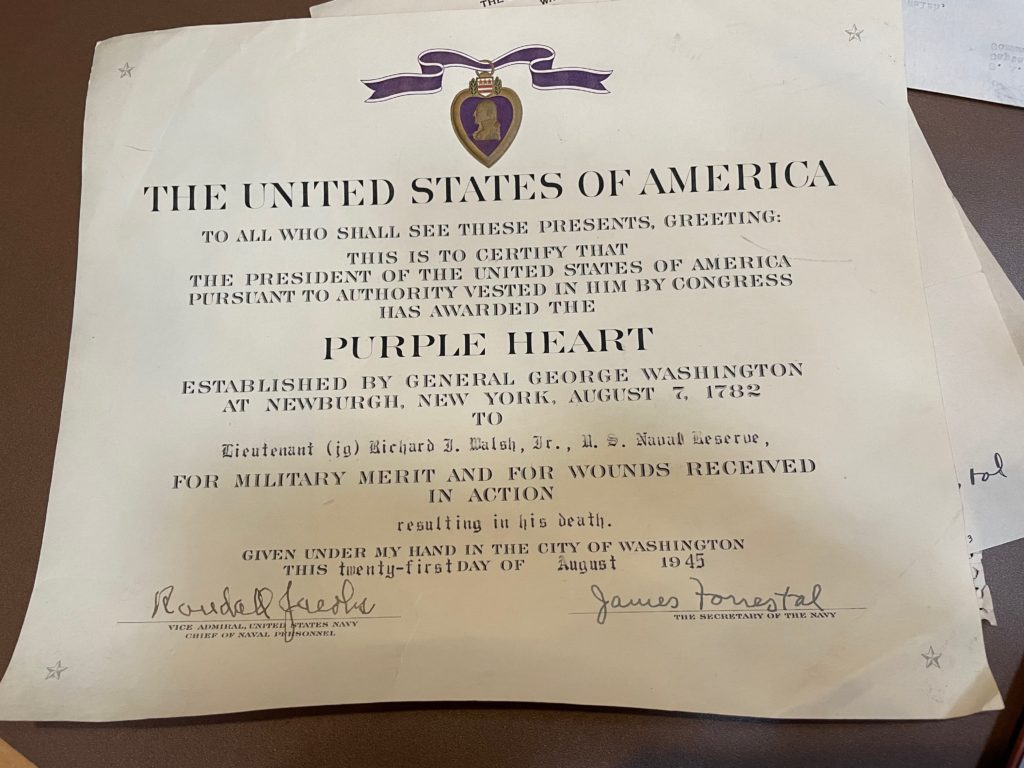
Eulogy
Lieutenant Walsh earned the rank of lieutenant junior grade on March 1, 1945, four years after enlisting in the military. He was part of the USS Bunker Hill, VT-84 Torpedo Squadron, Task Force 58. Walsh flew a TBM-3 Avenger Plane and was tasked with dropping torpedoes on targets to provide air support for the soldiers on the ground as part of the war in the Pacific Theater. His first attack station was on Ulithi Island. On April 7, 1945, Lieutenant Walsh was firing torpedoes during an attack on the Japanese battleship Yamato with VT-84 and was struck by anti-aircraft fire. His plane crashed into the water, and he was listed as Missing in Action. The witnesses who saw his plane hit the water assured that he was killed on impact with the rest of his crew. Lieutenant Walsh was the first in his squadron to be killed in action. The squadron were the first to fire on battleship Yamato, eventually leading to the sinking of the Yamato.
Lieutenant Walsh earned the Navy Cross, the second highest award a soldier can earn in the Navy. The Navy Cross is earned by soldiers who distinguish themselves for extraordinary heroism in combat with an armed enemy force. Lieutenant Walsh was awarded the Navy Cross for showing heroism throughout combat.
There are no better words to describe Dick’s sacrifice than those of his father: “ . . . I am glad I can look upon Dick as one of the finest people God ever put on earth, and that all of us can look back and take pride in the fact he was part of our lives.”
Thank you.
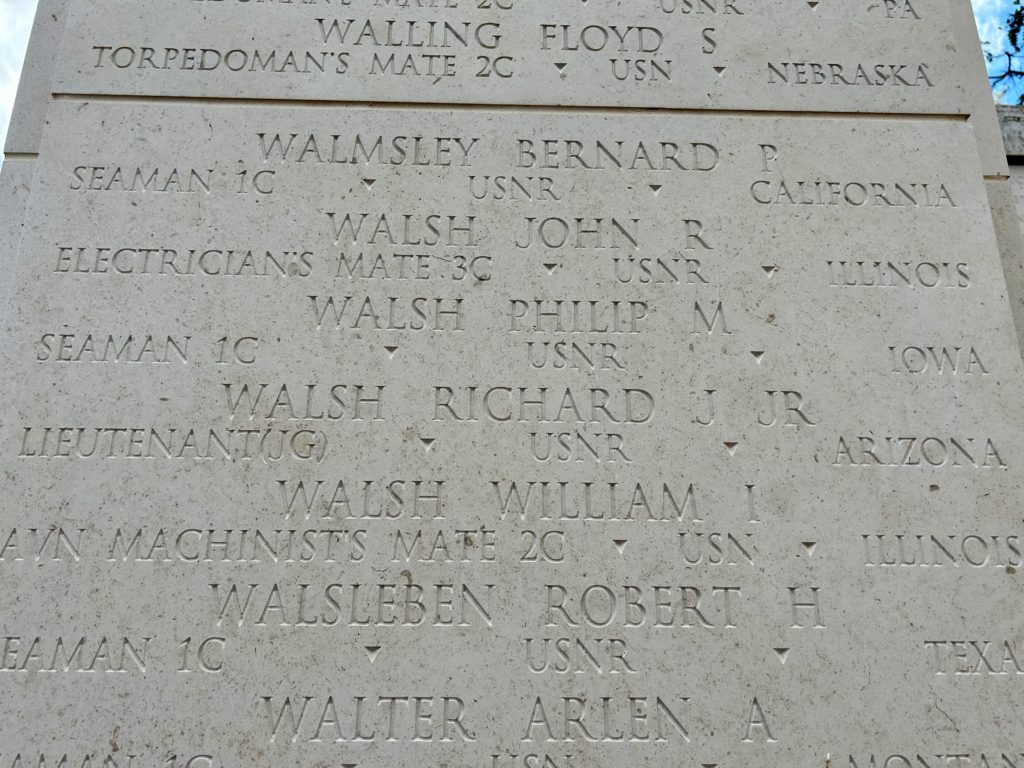
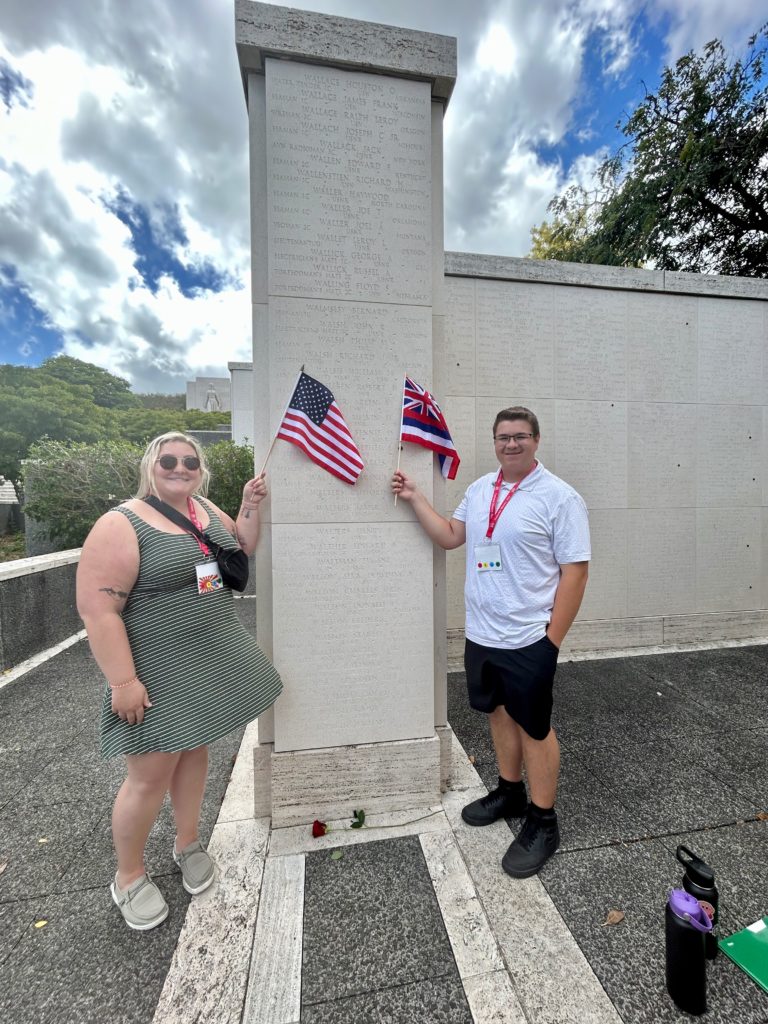
Reflection
Sacrifice for Freedom®: World War II in the Pacific Student and Teacher Institute was a once-in-a-lifetime opportunity. I cannot thank the Sacrifice for Freedom staff and their partners enough for this amazing experience. Going to Hawaiʻi and furthering my understanding of World War II in the Pacific was striking. I visited memorials that I have always dreamed of going to. The USS Arizona Memorial was very emotional for me. As an Arizonian and the first team selected from Arizona for Sacrifice for Freedom in Hawaiʻi, it was an honor to stand on that memorial. I will forever cherish feeling how the energy changes once you take that first step on the USS Arizona, experiencing the other memorials, and being at the location of the Pearl Harbor attack. I appreciate this opportunity I had, and I will cherish it forever.
Starting in January, and working to uncover Richard Walsh Jr.’s life and his sacrifice was an honor. I thank the family for being so helpful in this uncovering process. I felt privileged that I was able to reconnect the family with a fallen family member. Standing near Richard Walsh Jr.’s memorial on the Courts of the Missing at the Punchbowl was a great honor.
This program taught me important aspects to research, which I will use in my schooling. It was hard trying to find all the information. Successfully locating the important stories and facts has given me experience on how to dig deeper. I can use this in my schooling. My newly learned research skills and increased ability to interpret data, will help me to become a better student and to help me stay at the top of my class. As a rising senior in high school, the program has greatly helped me, and I thank the staff.
Bibliography
Primary Sources
Arizona. Maricopa County. 1930 U.S. Census. Digital Images. http://ancestry.com.
Arizona. Maricopa County. 1940 U.S. Census. Digital Images. http://ancestry.com.
“Ensign Richard J. Walsh, Jr., Pennsylvania Girl are Married.” The Arizona Republic [Phoenix, Arizona], March 7, 1943. Newspapers.com (117607247).
“Flier Ending Phoenix Stay.” Phoenix Gazette [Phoenix, Arizona], March 31, 1944.
Letter from Richard Walsh, Jr. to Richard Walsh, Sr. Courtesy of Pete Walsh.
Letter from Richard Walsh, Sr. to Grace Elizabeth Walsh. Courtesy of Pete Walsh.
Letter from a shipmate to Richard Walsh, Sr. Courtesy of Pete Walsh.
“Navy Airman is Missing.” Arizona Republic [Phoenix, Arizona] April 28, 1945.
“Our Fighting Men.” Arizona Republic [Phoenix, Arizona], January 30, 1944. Newspapers.com (117372426).
“Phoenix Flier Dies in Action.” Arizona Republic [Phoenix, Arizona], June 17, 1945. Newspapers.com (117355370).
Richard Walsh, Jr., Individual Deceased Personnel File, Department of the Army.
Richard Walsh, Jr., Official Miltiary Personnel File. National Archives and Records Administration – St. Louis.
Richard John Walsh, Jr. World War II Draft Cards Young Men, 1940-1947. Digital Images. https://ancestry.com.
Walsh Family Photographs. 1920-1945. Courtesy of Walsh Family.
Secondary Sources
“4-H History.” Maricopa Agricultural Center, The University of Arizona. Accessed September 19, 2023. https://mac.arizona.edu/ag-literacy-program-mac/4-h-history.
“American Indian Code Talkers.” The National WWII Museum. Accessed September 19, 2023. https://www.nationalww2museum.org/war/articles/american-indian-code-talkers.
Ciletti, Nick. “Japanese Communities Sent to Camps During WWII, Including Two in Arizona.” ABC15, May 3, 2021. https://www.abc15.com/news/state/japanese-communities-sent-to-camps-during-wwii-including-two-in-arizona.
Clark, Alexis. “The Army’s First Black Nurses Were Relegated to Caring for Nazi Prisoners of War.” Smithsonian Magazine, May 15, 2018. https://www.smithsonianmag.com/history/armys-first-black-nurses-had-tend-to-german-prisoners-war-180969069/.
Estes, Don. “The Road to Potsdon: A Brief Historical Summary.” Potsdon Preservation. Accessed September 19, 2023. https://www.postonpreservation.org/poston-internment.
Frank, BrieAnna J. “5 Things to Know about Arizona’s World War II Interment Camps.” The Arizona Republic [Phoenix, Arizona], January 30, 2017. https://www.azcentral.com/story/news/local/chandler/2017/01/30/5-things-know-arizonas-world-war-ii-internment-camps/96965004/.
“Gila River Internment Center – Rivers, Arizona” The Historical Marker Database. Updated May 20, 2020. Accessed March 24, 2023. https://www.hmdb.org/m.asp?m=34537.
Harvey, Ian. “The Japanese Internment Camps in Arizona.” War History Online. Updated February 5, 2017. Accessed August 22, 2023. https://www.warhistoryonline.com/war-articles/japanese-internment-camps-arizona.html?edg-c=1.
Melton, Brad and Smith, Dean. Arizona Goes to War: The Homefront and the Front Lines During World War II. Tuscon, University of Arizona Press, 2003.
Nacke, Carter. “75 Years Ago, a Phoenix-area Hotel and Air Base Partnered to Train World War II Pilots.” KTAR News, March 30, 2016. https://ktar.com/story/989361/75-years-ago-a-phoenix-area-hotel-and-air-base-partnered-to-train-world-war-ii-pilots/.
Naylor, Roger. “Great Papago Escape: 25 German POWs Dug Their Way Out of Phoenix Prison Camp.” The Arizona Republic [Phoenix, Arizona], December 17, 2015. https://www.azcentral.com/story/travel/2015/12/17/wwii-pows-escape-papago-park-arizona-military-history/77174834/.
“Navajo Code Talkers and the Unbreakable Code.” Central Intelligence Agency. Accessed September 19, 2023. https://www.cia.gov/stories/story/navajo-code-talkers-and-the-unbreakable-code/.
“Richard Walsh.” American Battle Monuments Commission. Accessed February 1, 2023. https://www.abmc.gov/decedent-search/walsh%3Drichard-1.
Smith, Ashley. “17 Unmissable WWII Site in Phoenix, Arizona.” Destination: WWII. Accessed September 19, 2023. https://destinationwwii.com/wwii-sites-in-phoenix-arizona-mesa-scottsdale-tempe/.
Stern, Ray. “Racial Tension Stoked the Deadly 1942 Phoenix Thanksgiving Day Riot.” Phoenix New Times [Phoenix, Arizona], November 25, 2020. https://www.phoenixnewtimes.com/news/racial-tension-stoked-deadly-1942-phoenix-thanksgiving-day-riot-11516385.
Talton, Jon. “WWII On the Homefront: Phoenix.” Rogue Columnist. Updated January 5, 2016. Accessed September 19, 2023. https://www.roguecolumnist.com/rogue_columnist/2016/01/phoenix-101-wartime.html.
Toll, Eric Jay. “A Pipeline Full of Arizona Manufacturing Opportunities.” Phoenix Business Journal [Phoenix, Arizona], June 7, 2022. https://www.bizjournals.com/losangeles/news/2022/06/07/a-pipeline-full-of-arizona-manufacturing.html.
Walsh, Tim. “Richard ‘Dickie’ Walsh (Jul 1920 – Apr 1945).” MyWalshes.com. Accessed January 19, 2023. http://www.mywalshes.com/richard_1920.php.
“World War II – Reclamation, Arizona, and the Hoover Dam.” U.S. Department of the Interior. Accessed September 19, 2023. https://www.usbr.gov/lc/phoenix/AZ100/1940/topstory.html.
